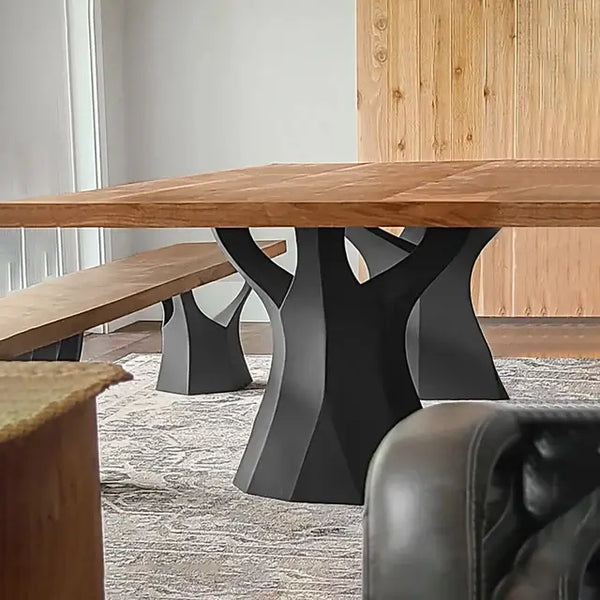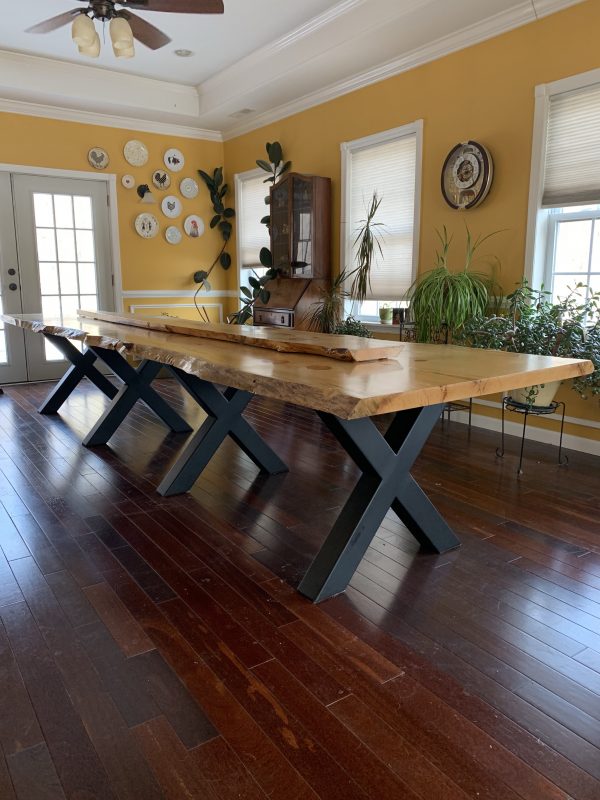From Conventional to Modern: Find the Perfect Dining-room Table Legs for Your Design
While traditional styles such as cabriole and turned legs evoke a sense of classic refinement, modern styles like barrette and geometric choices provide a possibility for striking visual rate of interest. As you take into consideration these elements, the question stays: just how can you flawlessly incorporate these diverse leg styles to produce an unified eating experience?
Comprehending Table Leg Styles
The selection of dining-room table leg styles can considerably affect both the aesthetic appeals and performance of the room. Each leg design adds unique visual elements and useful functions, satisfying varied layout preferences and use requirements. Comprehending these styles is essential for selecting the appropriate eating table that straightens with your general interior decoration vision.
For example, tapered legs provide a clean, classic look that can boost a room's style, while stand bases offer stability and optimize legroom, making them suitable for smaller spaces. Barrette legs, a characteristic of mid-century contemporary design, present an industrial flair, permitting for a ventilated, open feel. Trestle legs stimulate rustic beauty, supplying durable support and a feeling of timelessness.
Moreover, the choice of products plays a considerable duty. Wooden legs can bring heat and structure, whereas steel choices frequently share a smooth, contemporary vibe. Inevitably, recognizing table leg styles is necessary for producing a natural dining location that shows individual design while making sure practicality and convenience. By attentively taking into consideration these elements, you can enhance both the useful and aesthetic allure of your dining room.
Conventional Table Leg Options
When picking dining-room table legs, traditional alternatives typically personify ageless beauty and workmanship. These designs mirror a rich heritage and a dedication to top quality, making them suitable for those who value traditional aesthetic appeals.
One of one of the most renowned conventional leg styles is the cabriole leg, defined by its graceful rounded form. This design usually features ornamental carvings and is most commonly discovered in Queen Anne and Chippendale furniture. One more preferred alternative is the transformed leg, which flaunts a collection of smooth, rounded shapes that supply a traditional look while preserving stability.
Furthermore, the straight leg, while easy, provides a durable and unadorned framework that can mix flawlessly with a selection of tabletop designs. For those attracted to ornate outlining, claw-and-ball feet legs evoke a sense of splendour and can act as a sensational focal factor in any kind of dining area.
Finally, pedestal bases, although not strictly legs, supply an alternate standard alternative that enables adequate legroom and can be perfectly carved. Each of these conventional leg styles adds to the general setting of a dining room, marrying feature with aesthetic allure.

Modern Table Leg Styles
Modern table leg designs supply a diverse variety of styles that emphasize innovative materials and clean lines. These designs usually focus on functionality while functioning as striking centerpieces within a dining room. Minimalist appearances prevail, with legs crafted from materials such as metal, glass, and engineered timber, which add to a airy and contemporary feel.
One preferred design is the barrette leg, characterized by its slender, conical structure that supplies stability without frustrating the table top (dining room table legs). This design is frequently found in mid-century modern furniture and can effortlessly complement different eating table shapes. One more fad is using geometric shapes, where legs might tackle unbalanced or angular forms, adding aesthetic interest and a touch of virtuosity

Mixing Designs for Special Rooms
Typically, property owners seek to create one-of-a-kind eating areas that show their individual style by blending various style components. This technique permits for the unification of diverse aesthetics, resulting in a harmonious useful link yet unique setting. For instance, pairing a rustic wood table with smooth, modern metal legs can produce an appealing contrast that raises the area's overall appeal.
In addition, incorporating vintage table legs with modern table tops can evoke a sense of background while maintaining a modern-day sensibility. Such combinations not only display specific preference but likewise urge creative thinking, enabling house owners to curate a room that feels both individual and inviting.
Color plays an essential function in this blending procedure; picking table legs that complement or comparison with the existing color design can improve aesthetic rate of interest. Whitewashed legs can soften the daring of a dark table surface, producing a well balanced aesthetic.
Tips for Choosing the Right Legs
Selecting the right table legs is necessary for achieving both functionality and visual allure in your eating space. Begin by thinking about the total style of your room. Typical settings take advantage of legs that include elaborate makings or turned designs, while contemporary areas may ask for smooth, minimal designs.
Next, evaluate the height and security of the legs. dining room table legs. Basic table vary between 28 to 30 inches in elevation, so make certain the legs enhance this dimension for convenience. Additionally, durable materials, such as wood or steel, can improve stability and long life
Review the leg shape also-- options consist of directly, tapered, or pedestal styles. Straight legs provide a timeless look, while tapered legs can add a touch of style. Pedestal bases supply enough legroom and are optimal for smaller sized rooms.
Conclusion
In summary, picking the excellent eating space table legs needs mindful consideration of both modern-day and standard designs. By balancing leg design, height, and material with the total decoration, a cohesive and inviting environment can be accomplished.
The range read this post here of dining area table leg designs can dramatically affect both the aesthetic appeals and Continue performance of the space. Ultimately, comprehending table leg styles is important for developing a natural dining location that mirrors personal design while guaranteeing functionality and convenience.One of the most renowned conventional leg designs is the cabriole leg, identified by its elegant bent shape. Straight legs provide a timeless look, while conical legs can add a touch of elegance.In summary, picking the ideal eating room table legs calls for cautious factor to consider of both modern-day and conventional designs.